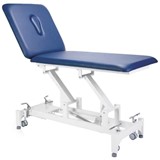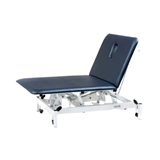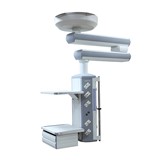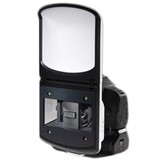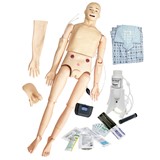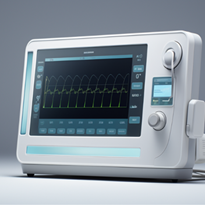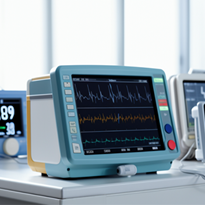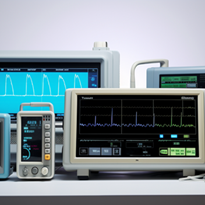I. Introduction
Patient monitors play a crucial role in modern healthcare, providing continuous vital sign measurements and critical data that assist healthcare professionals in making informed decisions about patient care. To ensure the accuracy and reliability of these monitors, regular maintenance and calibration are essential. This article delves into the key aspects of patient monitor maintenance and calibration, focusing on developing a comprehensive maintenance schedule and detailing proper cleaning and disinfection procedures. By adhering to these practices, healthcare facilities can enhance the longevity of their patient monitors, optimize performance, and ultimately improve patient outcomes.
II. Developing a Regular Maintenance Schedule for Patient Monitors
A. Understanding the Frequency of Maintenance Tasks
Patient monitors are intricate devices with various components that require regular attention. Establishing a well-defined maintenance schedule is essential to prevent unexpected malfunctions and ensure uninterrupted monitoring. By determining the appropriate frequency of maintenance tasks, healthcare facilities can strike a balance between timely upkeep and efficient resource utilization.
B. Identifying Critical Components for Inspection and Maintenance
Not all components of patient monitors require the same level of maintenance. Identifying critical components that significantly impact the accuracy and functionality of the monitor is crucial. This section will outline the key parts that warrant special attention during maintenance to guarantee reliable performance.
C. Creating a Comprehensive Maintenance Checklist
A systematic and comprehensive maintenance checklist is a valuable tool for healthcare facilities. It helps maintenance personnel to conduct thorough inspections and perform necessary tasks consistently. This subheading will provide insights into creating a detailed checklist that covers all aspects of patient monitor maintenance, promoting standardization and efficiency.
III. Cleaning and Disinfection Procedures for Hygienic Monitor Usage
A. Importance of Hygiene in Healthcare Settings
Infection control is paramount in healthcare environments to prevent the spread of diseases. Clean and hygienic patient monitors are vital to reduce the risk of cross-contamination and protect both patients and healthcare providers. This section will highlight the significance of maintaining a hygienic environment and its direct impact on patient safety.
B. Recommended Cleaning Agents and Practices
Proper cleaning agents and practices are critical to ensure effective disinfection without causing damage to sensitive monitor components. This subheading will offer insights into selecting appropriate cleaning agents and guidelines for safely cleaning patient monitors.
C. Disinfection Protocols without Damaging the Equipment
Disinfection is a crucial step to eliminate harmful pathogens, but it should be done in a manner that preserves the integrity of the monitor. This section will provide step-by-step protocols for disinfection, considering the technical aspects of the monitor, and avoiding potential damage that could compromise its functionality.
IV. Calibrating Monitor Parameters for Accuracy and Precision
A. Understanding Calibration and Its Purpose
- Definition of Calibration in the Context of Patient Monitors
- Importance of Calibration for Accurate and Reliable Readings
- Role of Calibration in Ensuring Patient Safety
B. Step-by-Step Guide to Calibrating Patient Monitors
- Preparing the Monitor for Calibration
- Checking Equipment Condition and Cleanliness
- Verifying Power Supply and Battery Status
- Selecting the Calibration Method
- External Calibration vs. Internal Calibration
- Choosing the Appropriate Calibration Standards
- Performing Calibration Procedures
- Adjusting and Verifying Measurement Parameters
- Calibrating Sensors and Transducers
- Recording Calibration Data
- Maintaining Proper Documentation
- Logging Calibration Results for Traceability
C. Ensuring Consistency in Readings through Calibration
- Importance of Regular Calibration to Maintain Accuracy
- Monitoring Calibration Intervals and Scheduling
- Addressing Drift and Deviations in Calibration
V. Implementing Quality Control Measures in Monitoring Systems
A. Importance of Quality Control for Patient Safety
- Understanding the Role of Quality Control in Healthcare
- How Quality Control Relates to Patient Monitor Accuracy
- Potential Risks of Inadequate Quality Control
B. Establishing Quality Control Protocols
- Setting Up Quality Control Processes
- Designating Responsibility for Quality Control
- Defining Key Quality Control Metrics and Parameters
- Regular Performance Checks and Monitoring
- Routine Verification of Monitor Readings
- Identifying Trends and Anomalies in Data
- Maintenance and Calibration Integration
- Ensuring Quality Control and Calibration Work Together
- Incorporating Quality Control into Maintenance Schedule
C. Addressing Deviations and Troubleshooting
- Identifying Deviations in Monitor Readings
- Early Detection of Inconsistent or Abnormal Data
- Understanding Potential Causes of Deviations
- Troubleshooting and Corrective Actions
- Investigating and Analyzing Deviations
- Implementing Corrective Measures and Re-calibration
VI. Handling Battery and Power Management for Uninterrupted Monitoring
Patient monitors play a crucial role in healthcare settings, providing real-time data that helps medical professionals make informed decisions about patient care. To ensure the seamless operation of these monitoring devices, it is essential to address battery and power management effectively. This section will cover the best practices for maximizing battery life, implementing backup power solutions, and considering power-related safety measures to guarantee uninterrupted monitoring.
A. Maximizing Battery Life for Portable Monitors
Portable patient monitors offer the advantage of mobility, allowing healthcare providers to monitor patients on the go. To make the most of their portability, it is vital to optimize battery life. Here are some key strategies to achieve this:
- Screen Brightness and Timeout Settings: Adjust the screen brightness to an optimal level and set a suitable timeout period for the display to conserve power when the monitor is not in active use.
- Turn off Non-Essential Features: Identify and disable any unnecessary features or functionalities that might drain the battery. For example, deactivate Bluetooth or Wi-Fi if not needed for immediate monitoring tasks.
- Battery Calibration: Periodically calibrate the battery to ensure the monitor accurately reports the remaining battery life and prevents unexpected shutdowns.
- Efficient Power Management Software: Utilize power management software that can regulate power usage based on monitoring activities and patient data transmission.
B. Backup Power Solutions to Prevent Data Loss
Data continuity is of utmost importance in patient monitoring, as interruptions could lead to critical information loss. Having reliable backup power solutions can safeguard against these situations. Here's how to implement effective backup power strategies:
- Uninterruptible Power Supply (UPS): Incorporate UPS units for stationary patient monitors. UPS devices provide a temporary power source during electrical outages, allowing the monitor to function seamlessly until power is restored or the monitor is safely shut down.
- Hot Swappable Batteries: For portable monitors, consider using hot swappable batteries. These batteries can be changed without powering down the device, ensuring continuous monitoring even during battery replacements.
- Battery Charge Monitoring: Implement a system that continuously monitors battery charge levels and sends alerts when the battery needs replacement or recharging.
C. Power-related Safety Considerations
Ensuring patient safety is paramount when dealing with power management for patient monitors. Here are some critical safety considerations:
- Electrical Safety Inspections: Regularly inspect the electrical components of the monitor and power supply to identify any potential hazards or malfunctions.
- Grounding and Surge Protection: Properly ground the monitors and use surge protectors to safeguard against power surges that could damage the equipment or compromise patient data.
- Safe Battery Handling: Train staff in safe battery handling procedures, including storage, disposal, and the use of manufacturer-approved batteries to avoid potential hazards.
VII. Staff Training for Correct Placement and Use of Monitoring Sensors
A. Importance of Proper Sensor Placement for Accurate Readings
Proper sensor placement is paramount in ensuring the accurate and reliable functioning of patient monitors. The data collected by monitoring sensors directly impacts clinical decisions, making it crucial to adhere to precise placement guidelines. Accurate readings aid medical professionals in diagnosing conditions, detecting changes in patient status, and delivering timely interventions. Here's why proper sensor placement is of utmost importance:
- Enhancing Patient Safety: Accurate sensor placement minimizes the risk of false readings, reducing the chances of medical errors. This, in turn, promotes patient safety and well-being.
- Optimizing Treatment Decisions: Reliable data obtained through correct sensor placement allows medical staff to make informed treatment decisions, leading to improved patient outcomes.
- Reducing Monitoring Downtime: Properly placed sensors result in fewer errors or the need for reapplication, reducing monitoring downtime and ensuring continuous patient observation.
B. Training Staff on Correct Sensor Application Techniques
Comprehensive training of healthcare staff is essential to ensure consistent and accurate sensor placement. Training programs should cover the following aspects:
- Understanding Anatomy and Physiology: Healthcare professionals must possess a thorough understanding of human anatomy and physiology to identify appropriate sensor locations based on patient-specific factors.
- Manufacturer Guidelines: Familiarization with the manufacturer's guidelines and recommendations for sensor placement is crucial. This ensures alignment with best practices and minimizes the risk of improper usage.
- Hands-On Practice: Training sessions should include hands-on practice sessions where staff members can apply sensors on mannequins or volunteer patients. This practical experience reinforces proper placement techniques.
- Troubleshooting and Problem-Solving: Staff should be equipped with problem-solving skills to address issues related to sensor placement, such as artifacts or poor signal quality.
C. Monitoring and Evaluating Staff Competency
Continuous monitoring and evaluation of staff competency in sensor placement are vital to maintain high standards of patient care. Implement the following steps to ensure ongoing proficiency:
- Regular Competency Assessments: Conduct regular assessments to evaluate staff members' sensor placement skills and identify areas for improvement.
- Feedback and Coaching: Provide constructive feedback and coaching to staff based on assessment results. Recognize areas of excellence and offer support in areas that need improvement.
- Refresher Training: Offer refresher training sessions to reinforce correct techniques and address any new developments or guidelines in sensor placement.
- Peer Review: Encourage peer review and collaboration among healthcare professionals. This fosters a culture of continuous learning and knowledge sharing.
VIII. Adhering to Regulatory Standards and Safety Guidelines for Patient Monitors
A. Overview of Relevant Regulations for Patient Monitors
Patient monitors play a crucial role in healthcare settings, providing real-time data to aid in patient assessment and care. As medical devices, patient monitors are subject to various regulations and guidelines to ensure their safety, reliability, and accuracy. Understanding the relevant regulatory landscape is essential for healthcare facilities and professionals to meet compliance requirements and maintain high standards of patient care.
- Medical Device Regulations:
Patient monitors are classified as medical devices and are subject to regulations set forth by health authorities in different regions. These regulations typically address device classification, pre-market approvals, post-market surveillance, and labeling requirements.
- International Electrotechnical Commission (IEC) Standards:
The IEC has established standards specifically related to patient monitors, focusing on safety, performance, and essential performance characteristics. Adhering to these standards helps manufacturers and users ensure the quality and safety of the devices.
B. Ensuring Compliance with Industry Standards
Compliance with industry standards is essential to demonstrate the safety and efficacy of patient monitors. Healthcare facilities, manufacturers, and users must work together to uphold these standards and improve patient outcomes.
- Conformity Assessment:
Manufacturers should conduct thorough conformity assessments to ensure their patient monitors meet the applicable regulatory requirements and standards. This process involves evaluating design, manufacturing, and post-market data to verify compliance.
- Regular Auditing:
Healthcare facilities should conduct regular audits to verify that patient monitors are being used and maintained according to the required standards. Audits help identify potential issues and ensure continuous compliance.
C. Addressing Safety Concerns and Best Practices
Ensuring patient safety is paramount in the use of patient monitors. Implementing best practices and addressing safety concerns can significantly minimize risks and enhance patient care.
- Proper Installation and Maintenance:
Following manufacturer guidelines for installation and maintenance is crucial to ensure the safe and reliable operation of patient monitors. Regular maintenance schedules help identify and address potential issues promptly.
- Alarm Management:
Effective alarm management is essential to prevent alarm fatigue and ensure critical alerts receive timely attention. Configuring alarms based on patient-specific parameters and setting appropriate thresholds can improve alarm accuracy and response.
- User Training and Competency:
Healthcare professionals should receive comprehensive training on patient monitor operation, including alarm handling and troubleshooting. Ongoing competency assessments help maintain a high level of proficiency among users.
In conclusion, patient monitor maintenance and calibration play a pivotal role in ensuring accurate and reliable vital sign measurements in healthcare settings. A well-defined maintenance schedule, encompassing critical component inspections, thorough cleaning and disinfection procedures, and regular calibration, is essential to sustain the accuracy and longevity of these vital devices. Additionally, adhering to quality control measures, optimizing power management, and providing comprehensive staff training for proper sensor placement contribute to enhancing patient safety and healthcare outcomes. By aligning with regulatory standards and safety guidelines, healthcare facilities can maintain the highest standards of patient care, foster a culture of continuous improvement, and ultimately elevate the quality of medical services provided.






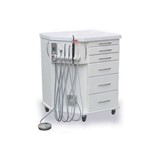


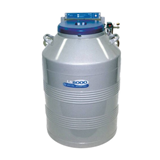
-160x160-state_article-rel-cat.png)

